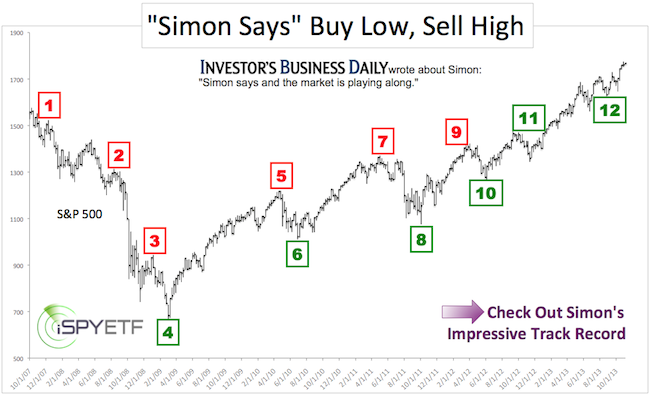Copper is said to be the only asset class to have a Ph.D. in economics because of its alleged ability to predict turning points in the global economy and stock market.
Here’s a quick sneak peek sound bite of what you’re about to read: If Dr. Copper was a surgeon; you wouldn’t want him to operate on you.
Dr. Copper Theory Explained
Copper is used in most economic sectors: Construction, power generation, power transmission, electronic products, industrial machinery, cars, etc.
The average car contains almost 1 mile or 75 pounds of copper. Additionally, copper is an excellent alloy and has become invaluable when combined with zinc to form brass and with tin to form bronze or nickel.
Copper is everywhere, that’s why demand for copper is often considered a leading economic indicator. The rationale makes sense, but is it true?
Copper – From Dr. to Quack
We will let the facts determine how reliable an indicator copper really is.
The charts below plot copper prices against the S&P 500 (SNP: ^GSPC) over the long-term and short-term.
The first chart goes back as far as 1959 and shows copper and the S&P 500 on a log scale. The dotted red lines mark copper highs, the dotted green lines copper lows. Shaded green bars highlight correct signals where falling copper prices predicted trouble for stocks.
It is somewhat difficult to correctly portray 54 years of stock market history on a few square inches, but it’s safe to say that copper, as an indicator, missed the mark more often than a Ph.D. should.
The second chart shows the correlation between copper and the S&P 500 from 2007 until now. The July 2008 copper high came too late to warn of the immediate post-2007 deterioration, but it was just in time to ring the alarm bells before the autumn 2008 meltdown.
The December 2008 copper low was a bit too early for the March 2009 stock market low, but correctly suggested higher prices until February 2011. Copper kept up a decent correlation until early 2012, but has been leading investors in the wrong direction ever since.
Copper’s Silver Lining
Remember that copper’s alleged predictive abilities can be seen as twofold:
1) As precursor for the stock market.
2) As precursor for the global economy.
By en large copper has failed as a leading stock market indicator (especially since 2012), but one can argue that the global economy has been deteriorating just as copper’s post 2011 decline suggested.
If it wasn’t for central banks’ coordinated inflation efforts, copper may have been right on both accounts.
Perhaps copper should be compared to ‘peers’ with an actual Ph.D. in economics – economists. Economists are generally bullish around major highs and bearish around major lows. Based on this benchmark, copper may well deserve its Ph.D.
What’s Next for Copper?
Right now copper is sandwiched between strong support around 3 and resistance at 3.2 – 3.3. Marginally higher prices seem likely. If resistance can be overcome copper may rally further. However, a drop below 3 should unleash much more selling pressure.
Copper ETFs
There are three copper exchange traded products (ETPs):
iPath DJ-UBS Copper ETN (NYSEArca: JJC)
United States Copper Index Fund (NYSEArca: CPER)
iPath Pure Beta Copper ETN (NYSEArca: CUPM)
All three copper ETPs are thinly traded, but JJC has thus far gained the most traction.
Simon Maierhofer is the publisher of the Profit Radar Report. The Profit Radar Report presents complex market analysis (S&P 500, Dow Jones, gold, silver, euro and bonds) in an easy format. Technical analysis, sentiment indicators, seasonal patterns and common sense are all wrapped up into two or more easy-to-read weekly updates. All Profit Radar Report recommendations resulted in a 59.51% net gain in 2013.
Follow Simon on Twitter @ iSPYETF or sign up for the FREE iSPYETF Newsletter to get actionable ETF trade ideas delivered for free.

|